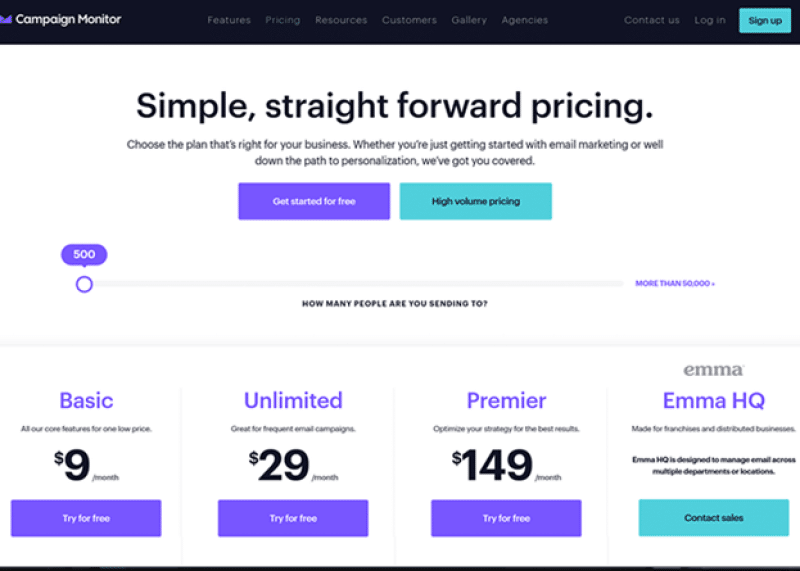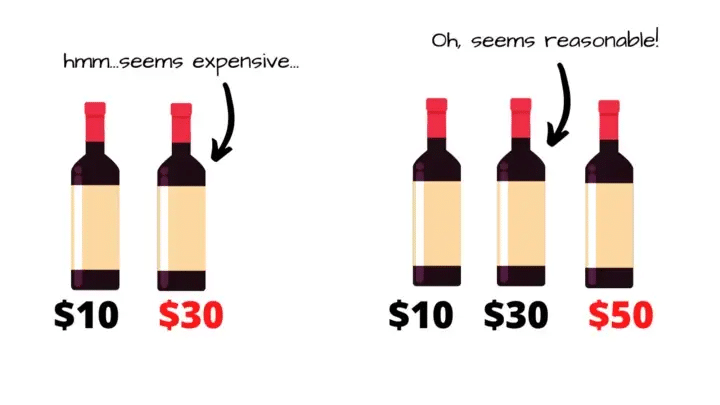Growing sales, retaining loyal customers and employees, training and enabling your channel partners or sales teams.
All these critical actions require human behavioral change.
But changing behaviors is difficult. We are complex and irrational thinkers.
“We are prone to overestimate how much we understand … We can be blind to the obvious, and we are also blind to our blindness,” Daniel Kahneman, one of the greatest minds in behavioral sciences, said in his Nobel Prize winning book, Thinking Fast and Slow.
But it’s made easier when you have the right tools. Behavioral Economics, or the theory that “combines elements of economics and psychology to understand how and why people behave the way they do in the real world,” is key to selling better, marketing with more intent, and persuading others.
Here are three principles – and their practical applications for distributors:
Principle No. 1: Choice Architecture
Having an abundance of choice is what we conceptually believe to be a good thing; the more, the better. However, for humans, abundant options are actually mentally distressing. This tends to create dissatisfaction with the choice we ultimately make.
Choice Architecture is being deliberate with the information we display and the way we set up the choices people need to make, whether digital, physical or in conversation.
Sales
In sales, using Choice Architecture means understanding how people make decisions. Here’s how to apply it:
1. Set up a default choice.
A default choice is a statement or price that’s easier for a buyer to agree to. This could be the base price of a product or establishing an agreed-upon goal for their company. Default choices help a salesperson ground the conversation by reminding the buyer of choices they’ve already made.
For instance, your product might have a service tied to it like expedited delivery. The default choice here is the base price for the product, which we can always come back to if they don’t want to shell out for the extra fast delivery.
2. Flip the question.
Flipping a question is a powerful way to get a buyer to second-guess their mindset. It’s best explained with an example. Using the example above with the expedited delivery, let’s say the default choice is to include the delivery and the fee, rather than ask if they’d like to add it on.
The question then becomes, “Would you like to opt out of the expedited delivery?” This option makes it feel like they’re losing something they’ve already gained and be more likely to not opt out. More on that in the Loss Aversion section.
3. Create urgency.
While this is, of course, not a new concept for sales, there’s significant Choice Architecture backing it. As stated in Nudge, a book written by Richard Thaler, a Nobel Prize winner for economics, “people make decisions quickly under pressure, based largely on intuition, and unconsciously guided by biases.”
A sense of urgency, especially when presented as a gap in the buyer’s needs, creates a choice for the buyer: do business with me, or lose out.
Marketing
Marketing with Choice Architecture in mind comes down to product positioning and understanding what your customers buy from you so that you can pitch them higher-revenue, lower-cost products.
For instance, you might have seasonality in a certain product line. You know that soon, certain products will be bought by certain customers, in line with that seasonality. Look at those products and determine which have the highest margin.
Start advertising or sending emails about those products to your previous purchasers before the season comes up. By the time the season rolls around, they’ll be primed with an awareness of those higher-margin products and more willing to switch rather than deciding for themselves which one they will buy this year.
An interesting example of Choice Architecture within Apple is their limited number of available products. Yes, they come out with a new phone every year, but each model offers only one or two variations. As well, they offer only a few versions of headphones or watches that you can buy. By limiting the number of products it creates, Apple limits your choices, and thus makes you happier with your overall choice.
Persuasion
Choice Architecture has a lot to do with presenting options early on so that when decision time comes up, you’ve already primed your audience with the choice you want them to make.
A great example of this comes again from Nudge: a daily specials board at a restaurant. Before customers even sit down, they see that board. A significant number of customers will instinctively opt for the specials because it’s already in their minds.
So, if you want to persuade someone to pick something, prime them early with the choice you want them to make.
Principle No. 2: Decoy Effect
Decoy Effect is perhaps the best tool for creating easy paths to upselling and is a subprinciple of Choice Architecture. Consider the pricing options you provide to customers: low cost, middle, high cost. By making one of those slightly less attractive, you will nudge people toward a more profitable choice.
Marketing
Let’s open with marketing this time because Decoy Effect is best explained with a visual. Pricing pages are your No. 1 example of Decoy Effect in the digital space. Take this example from Campaign Monitor.

Campaign Monitor probably makes the most amount of money on their Unlimited offering. Here’s why.
Next to the other two prices, Premier is a huge jump. $120 more than Unlimited. Premier is their Decoy price, because the presence of a $149 price tag makes the Ultimate plan seem like a steal. The Basic package by comparison seems like you might be missing out on the value of Unlimited. What’s another $20 compared to the $140 more for Premier?
You can effectively implement the Decoy Effect if you have an ecommerce platform. Think about how products are displayed on your website. Can you subtly create paths for people that lead to higher-margin products shown next to similar but more expensive, lower-margin products?
Counter displays are the same way. The wine example below is your classic retail example of the Decoy Effect. Your space is yours to display how you want. Make sure it’s working for you.

Sales/Persuasion
Here, we combine sales and persuasion because they tend to be similar. Employing Decoy Effect in sales or persuasion means including three options within your conversation or sale, knowing full well which are the most attractive and which is just the decoy.
For instance, the decoy price may be a non-fit option based on the conversations you’ve had in the past, but you’ve included it to make it seem like the other two prices are more reasonable, even though the middle option gets you the most margin.
Another example is if you’re asking for a raise. You could come to your boss with three potential compensation plans, saying, “Here are my three options for comp plans in 2023. Have a look and let’s discuss which your most interested in.” Meanwhile, you know that there are two in that group that your manager is most likely to lean toward.
Principle No. 3: Loss Aversion or Fear of Missing Out (FOMO)
Loss Aversion has many different forms but uses the negative emotion all humans have toward losing something or missing out on something. FOMO or fear of missing out, is a more pop culture way to refer to this behavioral economic principle. People are more likely to avoid the pain of loss than to seek gain, thus there’s a lot of effort to be gained by creating a sense of missing out.
Sales
When motivating a sales team, you want to create a sense of exclusivity in competition. For instance, in a sales incentive, you could have a leaderboard of your top 10 outside sales personnel. Those top 10 get a trip to Vegas every year. Missing out on that trip could be a pretty big motivator for the sales team, especially those who have already achieved that status and don’t want to lose it.
When selling, create a sense of exclusivity and urgency within your pricing model. Time-based pricing models can help you secure better pricing if your customers fear that they’ll lose their better pricing.
Marketing
Using a “limited availability” message in your marketing, “limited-time” offers on your ecommerce site, and “limited product availability” are three ways to drive home the Loss Aversion message in marketing. Simply put, using language that conveys “don’t miss out” or “act now” tends to move the needle.
Persuasion
Typically, when applying Loss Aversion in persuasion, you’ll want to use language that assumes others are in the know. For instance, while on a selling call, you could say, “I’ve been able to hold this price for people in your area and wanted to make sure you got the offer before it’s gone.” This implies that their competitors or people like them are getting this deal while they may not, strengthening the Loss Aversion.
Additionally, taking advantage of a perceived or real risk can be an avenue for persuasion. Airline insurance is a great example of this. You’re offered airline insurance because there’s a real risk that your flight might get cancelled or moved. This insurance, of course, is realized by the airlines as 100% margin most of the time.
Selling warranties can be another example. Try displaying the value they’d lose if they didn’t buy the warranty. This loss can be very motivating.
Implementing Behavioral Economics principles into your day-to-day life can be as simple as recognizing the opportunities to do so, which are plentiful. These three principles are just the start! If you want more now, check out these incredible books on the topic.
- Using Behavioral Science in Marketing by Nancy Harhut
- Nudge by Richard H. Thaler and Cass R. Sunstein
- Thinking, Fast and Slow by Daniel Kahneman
Lincoln Smith is the CSO at HMI Performance Incentives and has over 20 years of experience helping manufacturers, distributors, and service companies design award winning performance incentive strategies that motivate sales organizations and channels to accelerate growth and enhance customer engagement.


